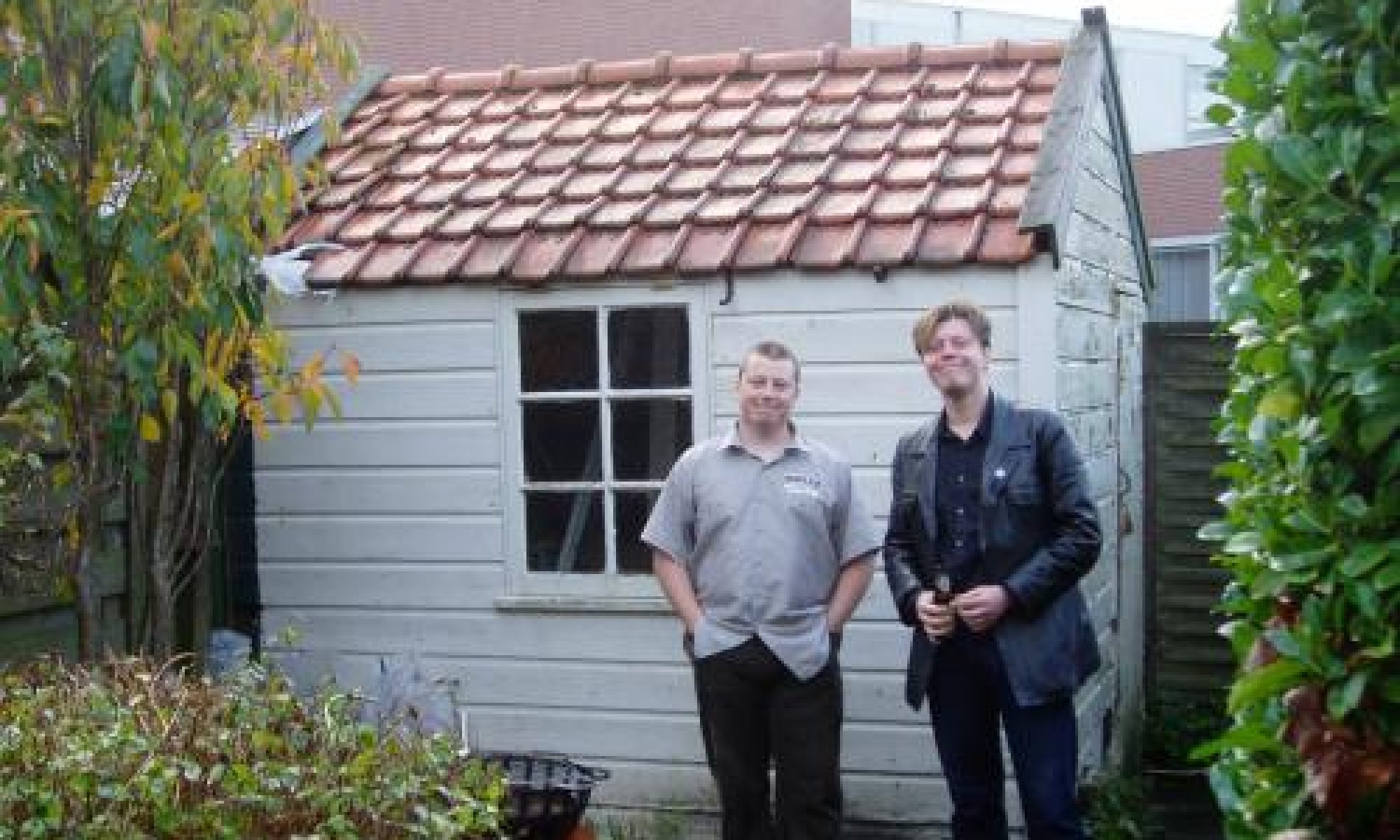Drawing comparisons with Der Ost is Rot or Movies by Holger Czukay (who, incidentally, was using samples in his work a good three to four years earlier) is an interesting game.
Drawing comparisons with Der Ost is Rot or Movies by Holger Czukay (who, incidentally, was using samples in his work a good three to four years earlier) is an interesting game.

My Life in the Bush of Ghosts – David Byrne & Brian Eno
Sometimes you find yourself rooting around in the oddest nooks and crannies in your record collection, finding stuff you’d completely forgotten about and being overjoyed when you stuck it on the turntable for a surreptitious spin. This was the experience I had last week when I unearthed My Life in the Bush of Ghosts from a murky corner of my vinyl shelves.
I know it’s an accepted by music heads as a work of considerable merit, and I suspect most of you own or at least have heard a copy. No reason to write about it as a lost classic then, I hear you say. Au contraire. The reason I’m writing this article is that it seems to me a crying shame that it isn’t mentioned as much as it should be. In fact no-one mentions it at all. Hence my article.
Released in 1981, and the result of a good two year’s collaboration between Eno and Byrne, My Life in the Bush of Ghosts lays claim to being the first LP to consistently feature samples as the main vocal content. The music comprises a set of soundscapes and ideas that, I suspect, couldn’t be shoe-horned into Byrne’s band Talking Heads by Eno; (Eno being at that time the band’s producer and unofficial fifth member), but that’s just a hunch of mine.
What is still very striking is the clarity and precision of the music. The tracks are arranged on quite a poppy footing. Drawing comparisons with Der Ost is Rot or Movies by Holger Czukay (who, incidentally, was using samples in his work a good three to four years earlier) is an interesting game. Czukay’s sampling is spread over a veritable smorgasbord of interlinked music and ideas, huge chunks of weird noises and instrumental breaks, punctuated by funny, ethereal voices.
Byrne and Eno, on the other hand, took a very different approach, using the structure of a conventional rock track; harnessing the vocal samples to create almost conventional ‘songs’. This is best witnessed on side one with the brilliant, paranoid opening track America is Waiting, where a voice bewails the fact that the U.S. is in a state of stasis. The music creeps around, like a pride of lions just waiting to pounce on their prey. Always the refrain "America is waiting for a message of some kind or another" holds the music in check, a feat compounded by the second, ‘counter vocal’, "b-but what are we gonna do?". It’s a magnificent opener and a perfect set up for the following track, Mea Culpa, where a politician’s voice, deliberately slurred, tries to calm an angry voter. The music is restraint itself, allowing the voices to build up a tense dialogue and never intruding. The track that follows, Regiment, is the weakest on the side, despite the wonderful opening funky drum-strut given by ‘Heads drummer Chris Frantz. The sample, that of the haunting voice of a Lebanese mountain singer, is drawn from an album called Human Voices in the World of Islam and, using it at the time must have seemed a novel, exciting move. Unfortunately it seemingly set the pattern for years of similar tracks from various artists, especially those of the rave generation, who seemed to think that bunging a muezzin’s call to prayer over a drum beat was enough of a statement to establish their own artistic credentials. Let’s move on.
Fortunately the following two tracks are possibly the best on the LP. Starting with Help Me Somebody, a dizzy African beat is established whilst a preacher intones his words of faith in the Lord. Always though, his message of hope is undermined by the sample, "help me somebody", making the listener extremely uneasy. But this is as nothing when the next track The Jezebel Spirit starts. A heady, pulsating dance backing is given to a recording of an exorcism. The exorcist’s lines, "Jezebel, are you in there? I command you in the name of the Lord to come out and leave this innocent woman" never fails to send shivers down my spine. Especially as you can hear the unfortunate woman shrieking in discomfort as the ritual is performed. What makes it even more gripping is the inclusion of the preacher’s laughter at regular intervals. Try to get your local DJ to play this in a club sometime.
Side two is a more muted affair, and is the haven for one or two of the wackier, unfinished pieces. It’s more reminiscent of Eno’s ambient LPs. Stuff like Very Very Hungry and Moonlight in Glory seem to be continuations of Eno’s work with Cluster; the voices are more fragmentary, or, as is the case with Very Very Hungry, non-existent. The best track by far on side two is The Carrier, which is a sublime blend of synths and voice, giving the feeling of a dry, rocky mountain pass. There are elements of Talking Heads’ Remain in Light LP here too. It’s as if this side of the album was meant to be the place where all the pent up emotions of side one are spirited away. For the listener it’s a lovely come down.
I’m pretty sure this lp is still readily available; I have seen it in cd form with all the extra tracks (including Koran, which mystifyingly didn’t make the final cut). So there’s really no excuse. Highly recommended.
